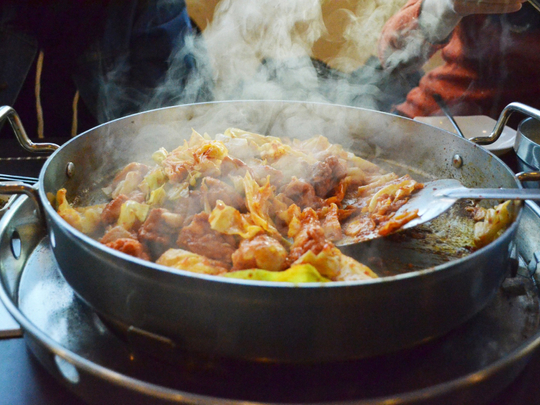
I know too many Indians who apologise for Indian food. They apologise for it being too spicy, or too smelly, or too sweet, or too much eaten with the hands. Someone I know regularly pontificates about how we Indians “overcook” all our vegetables, turning them into mush. This is a notion I find offensive on a couple of levels.
The first is that a proper home-cooked Indian meal, North or South, East or West, features a range of textures and cooking levels. Plenty of vegetables are either raw or not heavily cooked, whether as the salad known as kachumber, or the vegetable dish poriyal, or that side salad called kosumbari that contains raw lentils (whose taste I can’t stand).
But sure, let’s allow that since we live in the tropics, most dishes feature long-cooked ingredients. To suggest that these ingredients are overcooked is to suggest that there’s a global accepted level of cooking for all vegetables — and that the western standard of lightly cooked, still crunchy vegetables is somehow “correct”, anything else is either over- or under-done.
I realise though, it’s unfair of me to suggest this is a “western” standard. I just read that it is, in fact, specifically a classical French standard, in an article titled When to Cook Your Vegetables Long Past ‘Done’ in The New York Times magazine. It was written by the star chef du jour Samin Nosrat, whose book Salt, Fat, Acid, Heat has rightly become an instant classic.
In the article she tells the story of lightly cooking some beans as an apprentice at a trattoria in Italy, only to discover they were actually to be cooked for over two hours, reducing to a delicious softness. Nosrat writes that the blanch-and-cool technique makes for great looking plates and, “Long-cooked foods, on the other hand, fall firmly into the ‘‘ugly but good’’ camp of the Tuscan cucina povera, where flavour far outshines looks.”
David Chang, the chef who lives up to the cliche of rock star status, regularly posts on Instagram under the “uglydelicious” hashtag, acknowledging that some of the best-tasting dishes are the least photogenic. Fine-dining hasn’t been left out of the general cultural movement towards becoming more inclusive, less snobbish, and far more informal, and its been fun watching offal, fat, “long-cooked” vegetables and many ugly things that ethnic or peasant cultures have long known to be delicious, become mainstream. Or at least, fashionable.
Blind allegiance
When eating is becoming more exciting every day, it’s painful to watch when people become entrenched in a perceived right or wrong way. There are few things more tiresome than a diner at your table delivering criticism, not because the dishes aren’t executed well, but because they aren’t cooked in a familiar way.
It’s especially disheartening to cook for people like this, who complain and leave piles of uneaten food not because they genuinely dislike a certain flavour or texture, but simply because it’s different. I have had to repeatedly cook for someone who, with no knowledge of the cuisine behind a particular dish I’ve spent hours cooking, tells me I should have used a pressure cooker, or added spices, or seasoned with vinegar, even though none of these suggestions have a place in the history or culture of the dish.
Can you imagine using a pressure cooker for American barbecue?
In that sense, pledging blind allegiance to your country’s food and cooking methods is as ridiculous as apologising for it. Nobody anywhere overcooks or undercooks anything, and everything is delicious. It’s only your dislikes that limit the world.
Gautam Raja is a freelance journalist based in Los Angeles, US.








